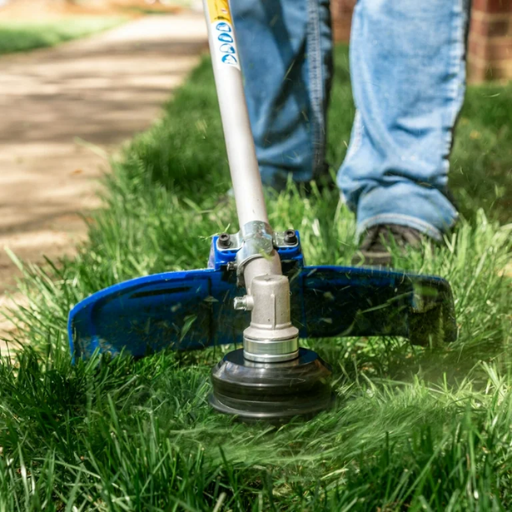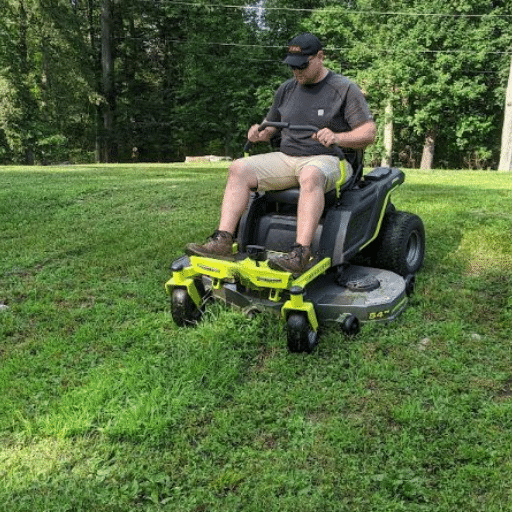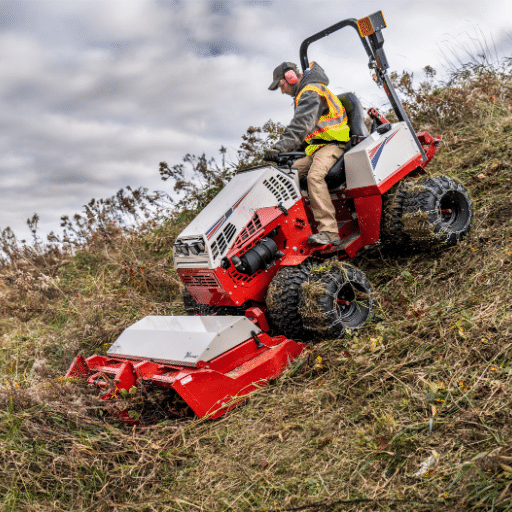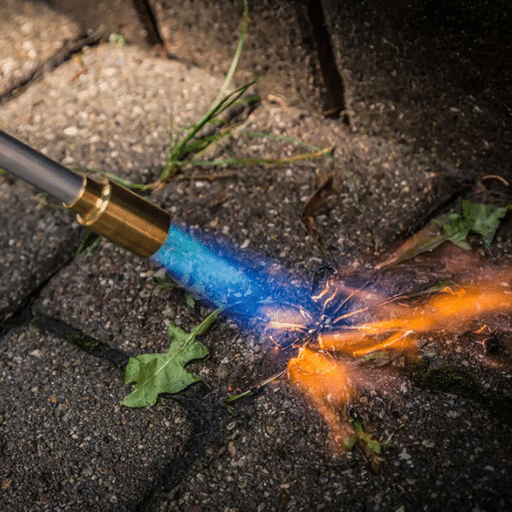Transform your landscape maintenance with the right brush cutting tools! Whether you’re a homeowner tackling light lawn maintenance or a professional landscaper handling heavy-duty clearing, this comprehensive guide will help you choose the perfect brush cutter and trimmer combination for efficient and effective results.
Introduction to Brush Cutters and Trimmers

Brush cutters and trimmers are essential multidisciplinary cutting tools designed to maintain outdoor spaces by cutting grass, weeds, and dense vegetation. Understanding the difference between these tools is crucial for making the right choice:
- Brush cutters feature high-powered motors and interchangeable blades for heavy-duty tasks
- Trimmers are designed for lighter jobs such as edging lawns or cutting grass in tight spaces
- Both tools are necessary to keep yards, gardens, and landscapes well-groomed and presentable
What is a Brush Cutter?
Brush cutters are heavy-duty cutting tools specifically designed for horticulture and landscaping applications. These powerful machines excel at clearing unwanted vegetation that regular lawnmowers or trimmers cannot handle.
Key Features of Brush Cutters:
- Strong motor with flexible shafts
- Interchangeable cutting heads
- Steel or nylon blades depending on the task
- Ergonomic designs to reduce user fatigue
- Capability to cut tall grasses, tough weeds, shrubs, and small trees
Differences Between Brush Cutters and String Trimmers
| Feature | String Trimmers | Brush Cutters |
|---|---|---|
| Primary Use | Light trimming, grass cutting, edging | Heavy-duty cutting, thick brush, small saplings |
| Cutting Mechanism | Rotating nylon string/line | Steel or composite blades |
| Weight | Lightweight and easy to handle | Heavier due to powerful engines |
| Power Options | Electric (corded/cordless) or gas | Primarily gas-powered |
| Maintenance | Simple – occasional line replacement | More complex – blade sharpening, engine service |
| Cost Range | Affordable ($50-$200) | Higher investment ($250-$500+) |
| Skill Level Required | Beginner-friendly | Requires more skill and safety awareness |
Key Features to Look for in a Brush Cutter or Trimmer

Engine Power and Type
Choose between two-stroke and four-stroke engines based on your needs:
- Two-stroke engines: Lighter weight and more powerful
- Four-stroke engines: Quieter, more fuel-efficient, lower emissions
Interchangeable Cutting Blades
Look for brush cutters with multiple blade options to handle different vegetation types, from thick grasses to dense bushes and small tree branches.
Weight and Ergonomics
Consider designs with:
- Padded handles for comfort
- Adjustable straps to reduce fatigue
- Anti-vibration technology
- Optimal weight distribution
Additional Important Features
- Cutting Width: Wider paths for faster area coverage
- Durability: High-quality materials for longevity
- Fuel Efficiency: Important for extended use periods
- Safety Features: Automatic shut-off, blade guards
- Maintenance Ease: Replaceable parts and simple procedures
Blade Types and Their Applications
| Blade Type | Best For | Characteristics |
|---|---|---|
| Metal Blades | Thick grass, underbrush, small saplings | Strong and durable for heavy-duty work |
| Plastic Blades | Light grass, soft garden edges | Lightweight, ideal for precision work |
| Brush Knife Blades | Thick brush, stubborn weeds | Multi-toothed for maximum cutting efficiency |
| Chisel Tooth Blades | Woody shrubs, tree saplings | Circular saw-like design for forestry work |
| String Line | Grass, soft vegetation | Nylon line for lawn maintenance |
Power Source Comparison: Gas vs. Electric vs. Battery

Gas-Powered Tools
- Maximum power for heavy-duty applications
- Suitable for large-scale projects
- No cord limitations
- Longer runtime
Gas-Powered Drawbacks
- Heavier and noisier
- Produces emissions
- Requires fuel and oil mixing
- More maintenance needed
Electric Tools
- Consistent power supply
- Quieter operation
- No emissions
- Lower maintenance
Electric Drawbacks
- Limited by cord length
- Less power than gas
- Requires electrical outlet
Battery-Powered Tools
- Excellent mobility
- Quiet operation
- Environmentally friendly
- Easy to start and use
Battery Drawbacks
- Limited runtime
- Charging time required
- Battery replacement costs
- Less power for heavy tasks
Top-Rated Brush Cutters and Trimmers

Best Brush Cutters on the Market
| Model | Type | Key Features | Best For |
|---|---|---|---|
| Husqvarna 128LD | Gas String Trimmer | Detachable shaft, multiple attachments | Medium to heavy-duty residential use |
| Makita XRU15PT1 | Cordless | 18V Lithium-ion, multiple speeds | Home and light landscaping |
| Stihl FS 131 | Professional Gas | Anti-vibration, rugged build | Heavy-duty professional use |
| EGO Power+ ST1521S | Cordless | Brushless motor, ergonomic design | Homeowners seeking electric efficiency |
| Honda HHT35SUKA | 4-Stroke Gas | Fuel-efficient, smooth operation | Heavy-duty landscaping |
Best String Trimmers for Weed Cutting
| Model | Power Source | Key Benefits | Price Range |
|---|---|---|---|
| DeWalt 20V MAX | Battery | Brushless motor, lightweight | $150-$200 |
| Husqvarna 128LD | Gas | Powerful, detachable shaft | $200-$250 |
| Black+Decker LST140C | Battery | Budget-friendly, PowerDrive transmission | $80-$120 |
| Makita 18V LXT | Battery | Quiet operation, automatic speed control | $120-$180 |
| Ryobi 40V Expand-It | Battery | Multiple attachments, 40V power | $150-$220 |
Tips for Choosing the Right Tool
1. Assess Your Yard Size and Terrain
- Small yards: Lightweight electric or cordless trimmers
- Large properties: Gas-powered brush cutters
- Uneven terrain: More powerful tools with better balance
2. Consider Vegetation Type
- Light grass and soft vegetation: Nylon string trimmers
- Dense brush and saplings: Metal blade brush cutters
- Mixed vegetation: Tools with interchangeable attachments
3. Power Source Preferences
- Maximum power needs: Gas-powered tools
- Quiet operation: Electric or battery-powered
- Environmental concerns: Battery or electric options
4. Ergonomics and Comfort
Look for features that enhance comfort during extended use:
- Adjustable handles and shoulder straps
- Lightweight frame design
- Anti-vibration systems
- Proper weight distribution
5. Maintenance and Durability
- Choose models with easily replaceable parts
- Look for extended warranty options
- Consider long-term maintenance costs
- Research customer support quality
Budgeting: Quality vs. Quantity

Investment Considerations
- Quality approach: Higher upfront cost but better durability and efficiency
- Budget approach: Lower initial investment, suitable for occasional use
- Long-term value: Quality tools often provide better ROI through longevity
Price Ranges by Category
| Tool Type | Budget Range | Mid-Range | Professional |
|---|---|---|---|
| Cordless Trimmers | $80-$150 | $150-$250 | $250-$400 |
| Gas Trimmers | $150-$250 | $250-$400 | $400-$600+ |
| Brush Cutters | $200-$350 | $350-$500 | $500-$800+ |
References
-
University of California Agriculture and Natural Resources – Cutting: String Trimmers / Brush Cutters: Provides detailed insights into the functionality and applications of string trimmers and brush cutters.
-
Ohio State University – Handheld Trimmers and Brush Cutters: Discusses the versatility and uses of handheld trimmers and brush cutters for small farms and gardens.
Frequently Asked Questions (FAQ)
What is the best brush cutter for heavy-duty work?
The best brush cutter for heavy-duty work typically holds a powerful engine, a steel drive shaft, and a brush cutter blade designed to tackle thick brush and small trees. Brands such as Stihl and Husqvarna provide professional-grade machines for these very tough tasks.
How do I select the right brush cutter blade?
The selection of an appropriate brush cutter blade depends on the vegetation you want to cut. A heavy-duty brush blade will suit heavy brush while a grass blade may handle lighter jobs. Always confirm that the blade is compatible with your trimmer head.
What are the benefits of having a brush cutter attachment?
The brush cutter attachment gives your string trimmer more versatility by allowing you to switch between trimming grass and cutting heavier vegetation. Such adaptability makes it an invaluable tool for yard maintenance, especially in the more unruly regions.
Can brush cutters be used for mowing?
Yes, brush cutters can mow, especially if it involves high grass and light brush. For big areas, however, a mower would be more viable. Anything cut with a brush cutter using a grass blade will be a clean cut for the purpose of mowing.
What is the difference between a gas brush cutter and an electric one?
Gas brush cutters are more powerful in general and work well for huge projects, while electric models put less noise and are easier to maintain. For anyone with a small yard or light trimming needs, a cordless or electric brush cutter would be a good option.
How do I sharpen my brush cutter blade?
Sharpening brush cutter blades keeps them cutting efficiently. You can sharpen the blade edges using a file or a fine grinding wheel. Always follow the manufacturer’s manual to learn the correct sharpening techniques.
What is a straight shaft brush cutter?
A straight shaft brush cutter has a long shaft which gives it better reach and ease of use in tight spaces and on low-growing plants. It is the favored design for most professionals owing to the balance and control during operation.
Are there brush cutters available in Home Depot?
This is, indeed, true, they offer many kinds of brush cutters, including gas-powered and battery-powered. You will find brands rated highly such as Stihl, Husqvarna, and Echo for all your yard maintenance needs.
What type of harness is best for using a brush cutter?
A comfortable, adjustable harness is essential to using a brush cutter, especially for long hours. Search for harnesses that help distribute weight evenly and offer support to reduce fatigue and ensure safe operation.









